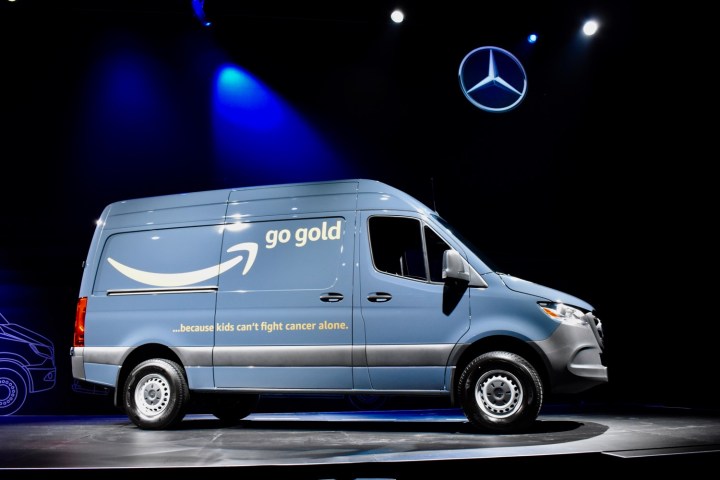 The 2019 Mercedes-Benz Sprinter isn’t like most vans. It has infotainment and driver-assist features similar to what you’d normally expect from a passenger car. In a first for Mercedes, the new Sprinter will also be built in the United States. Mercedes cut the ribbon at a new factory in North Charleston, South Carolina, on September 5, and simultaneously announced an order for 20,000 vans from Amazon.
The 2019 Mercedes-Benz Sprinter isn’t like most vans. It has infotainment and driver-assist features similar to what you’d normally expect from a passenger car. In a first for Mercedes, the new Sprinter will also be built in the United States. Mercedes cut the ribbon at a new factory in North Charleston, South Carolina, on September 5, and simultaneously announced an order for 20,000 vans from Amazon.
Mercedes claims to have spent $500 million on the factory, which will employ 900 workers at the start of production. The automaker expects to expand the workforce to up to 1,300 by 2020. While the factory will only build Sprinter vans, the sheer number of possible of combinations of body style, powertrain, and equipment (Mercedes claims there are more than 1,700 such combinations) means employees have to learn around 900 individual steps to build a specific vehicle, according to Mercedes. But the automaker is using some new tech to make the job easier.
Workers can use digital prompts designed like a computer game to familiarize themselves with various assembly processes, a Mercedes press release said. This replaces the traditional method of training workers on physical, preproduction vehicles. In the paint shop, workers will be trained using virtual reality, which should save a lot of paint.
The North Charleston factory is an expansion of an existing facility that has been building Sprinter and Metris vans from so-called “semi-knocked-down kits” since 2006. These were essentially complete vehicles shipped in pieces from overseas to avoid the “chicken tax,” a steep tariff on imported vans and trucks that dates back to the Johnson Administration. While North Charleston will still use parts brought in from other Mercedes factories, the work done on site will be more extensive, encompassing things like painting, and body assembly.
At a press conference after the factory’s opening ceremony, Volker Mornhinweg, head of Mercedes’s van division, declined to state the factory’s capacity, saying it is against company policy to discuss those figures. Mercedes is also unwilling to discuss the tensions between the United States and European Union over trade, and how that might affect its business. A spokesperson said the company supports free trade, however.
The 2019 Sprinter being assembled in South Carolina is the third generation of Mercedes’ big van. It features the new MBUX infotainment system, which is only just now being rolled out in Mercedes’ passenger cars. Mercedes also packed the Sprinter with driver-assist tech rarely seen in vans, such as adaptive cruise control, autonomous emergency braking, rear cross traffic alert, and a 360-degree camera system.
The Sprinter launches with gasoline and diesel engines, but an all-electric eSprinter model is on the way. Mercedes van boss Morhinweg would not confirm if the electric version would be sold in the U.S. He noted that “for a specific kind of usage, it makes sense,” but said cost might be an issue.
All of that was apparently enough to convince Amazon to sign on the dotted line. The online retail giant has already ordered 20,000 of the vans, making it the largest Sprinter customer, according to Mercedes. The vans will be made available to independent contractors under Amazon’s Delivery Service Partner program. Regardless of who the original owner is, it’s probably only a matter of time before some of these new Sprinters end up on the secondhand market and get turned into camper vans.
Updated: Added photo of Amazon-liveried Sprinter and more details from Mercedes executives.
Editors' Recommendations
- Mercedes’ electric eSprinter isn’t just greener, it’s better
- Amazon expands its virtual healthcare service across the U.S.
- 2024 Mercedes-AMG S63 E Performance first drive review: high-performance plug-in
- Mercedes is finally bringing an electric van to the U.S.
- Jeep is launching its first two electric SUVs in the U.S. in 2024


